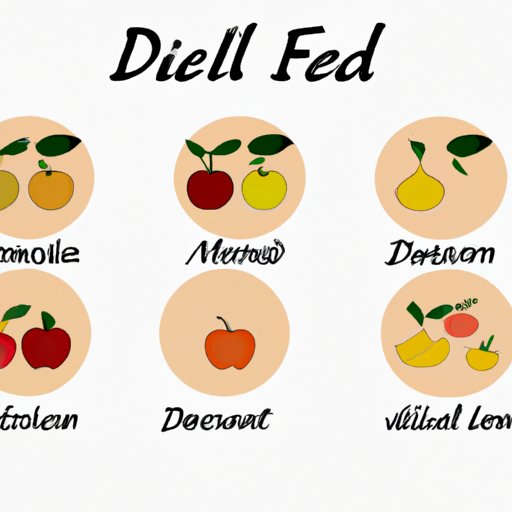
I. Introduction
Have you ever wondered what it means to have a balanced diet? According to the World Health Organization, a balanced diet is “a diet that provides all the essential nutrients in sufficient quantity and in the right proportions to promote good health.” In other words, it’s about consuming the right types and amounts of food to maintain optimal health. Let’s dive into what it means to have a balanced diet and how it impacts your overall well-being.
II. Defining a Balanced Diet
A balanced diet is about getting all the essential nutrients the body needs, including carbohydrates, proteins, fats, vitamins, and minerals, in the right amounts. While the specific quantities differ for each individual, the general goal is to choose nutrient-dense foods and avoid processed foods high in calories, added sugars, and saturated and trans fats. Consuming a balanced diet is crucial for maintaining optimal health, preventing chronic diseases, and promoting longevity.
III. Specific Foods and Food Groups that Promote a Balanced Diet
There are five food groups that contribute to a healthy and balanced diet. These groups include:
- Vegetables
- Fruits
- Grains
- Protein-rich foods
- Dairy products or non-dairy alternatives
Each of these groups plays a vital role in providing the body with the nutrients it needs for optimal health. Vegetables and fruits are packed with vitamins, minerals, and fiber, while grains are a great source of carbohydrates and essential vitamins. Protein-rich foods, such as meat, chicken, fish, beans, and legumes, provide the body with the necessary amino acids and dairy products provide calcium as well as vitamin D.
According to the United States Department of Agriculture, the recommended daily servings for each food group are:
- Vegetables: 2 1/2 to 3 cups per day
- Fruits: 1 1/2 to 2 cups per day
- Grains: 6 to 7 ounces per day, half of which should be whole grains
- Protein-rich foods: 5 to 6 ounces per day
- Dairy products or non-dairy alternatives: 3 cups per day for adults
IV. Personal Essay
When I first began my journey towards a balanced diet, it was difficult to let go of many of my favorite foods. However, I found that incorporating healthier foods into my diet gradually helped me adapt to this new way of eating. One of the challenges I faced was finding healthy snacks to eat throughout the day. I started keeping raw vegetables and fruits around, which greatly helped me to curb my cravings. In addition, I found that meal prepping and planning ahead allowed me to stick to a balanced diet even when busy schedules threatened to derail my efforts.
V. Infographic or Visual Guide
Want an easy visual guide to creating a balanced diet? Check out our infographic:

VI. Expert Insights
To provide additional insight, we interviewed a registered dietitian, Kelly Smith, about how to build a balanced diet. Kelly suggests that you start with small goals, focus on nutrient-dense foods, and keep in mind that every meal doesn’t have to be perfectly balanced. She also recommends trying new healthy recipes and incorporating new fruits and vegetable into your diet.
VII. How-to Guide
If you’re unsure where to start, check out our easy steps for building a balanced diet:
- Make a list of healthy foods you enjoy and start incorporating them into your diet more frequently.
- Gradually reduce processed and unhealthy foods.
- Get creative with your cooking and try new healthy recipes.
- Make meal plans to help you stick to your goals.
- Stay hydrated by drinking plenty of water.
VIII. Conclusion
A balanced diet is an essential part of maintaining optimal health. By incorporating the recommended daily servings of the 5 food groups, gradually reducing unhealthy foods, practicing portion control, and trying new healthy recipes, you can build balanced eating habits that will contribute to a healthier lifestyle. Remember, you don’t have to be perfect – each healthy choice you make is a step in the right direction.





